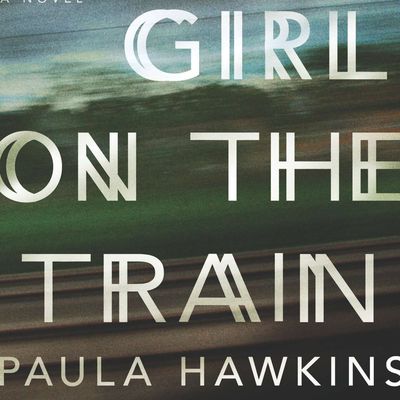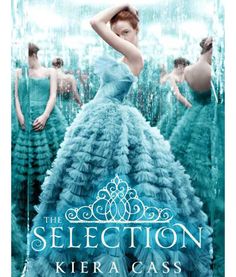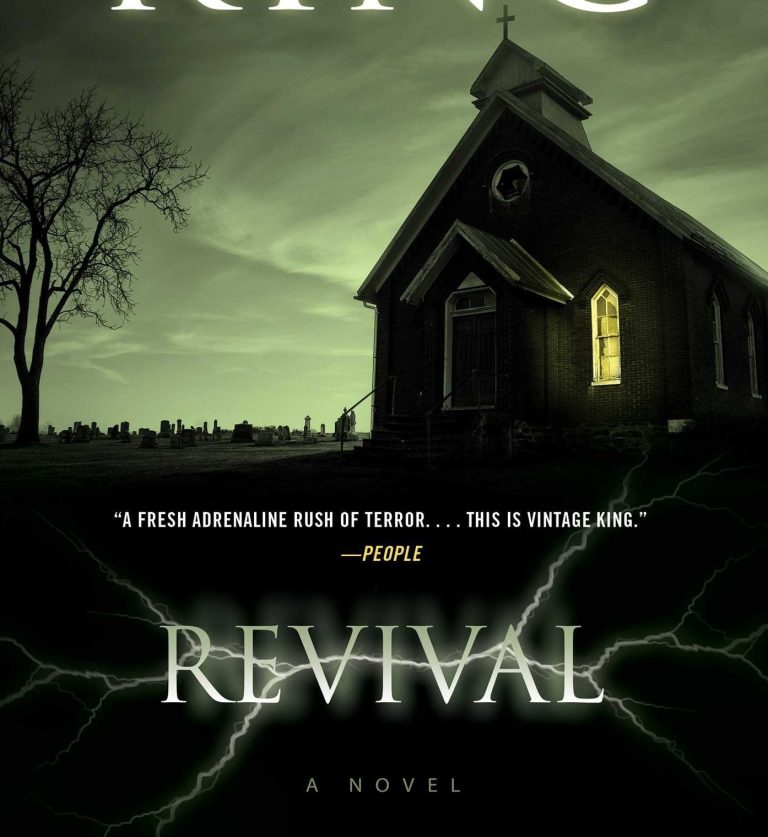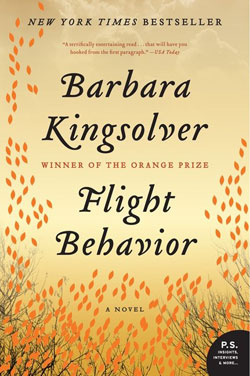First Pages of Best-Selling Novels: The Girl on the Train
As we’ve been seeing each week in this exploration of first pages, openings to novels carry a heavy burden. It’s the make-or-break page for the reader. Many people won’t read past the first page if it fails to engage their interest. So writers need to pay huge attention to the first page—maybe not so much at the first-draft stage, but at some point before that novel is submitted to agents or published.
First pages need to be tight, with concise description, and jump right into dynamic action and hint of conflict. Every word counts, so excess verbiage and unimportant movement and speech must be eliminated.
We’re using my first-page checklist to go through the author’s first page to see why it effectively draws the reader quickly into the story. While novels don’t have to have every one of these checklist elements on the first page, usually the more they do have, the stronger the opening.
Today we’re going to look at my favorite read of last year—The Girl on the Train by Paula Hawkins. I was a bit wary upon reading the first few pages because, for me the opening was a little slow, but it quickly become riveting, and like a train barreling down a steep ravine, the novel kept me breathless and hooked until the last page.
It is one of those rare novels that fill my thoughts from waking till sleeping. I was intrigued by the characters and had to know what happened to them, and the story builds beautifully to the climax and ending and left me mulling over the story for weeks after I finished it.
So let’s take a look at Hawkins’s first page (it’s perhaps a bit more because of the layout of these opening bits), and then we’ll use my first-page checklist to see why it’s a strong opening.
She’s buried beneath a silver birch tree, down towards the old train tracks, her grave marked with a cairn. Not more than a little pile of stones, really. I didn’t want to draw attention to her resting place, but I couldn’t leave her without remembrance. She’ll sleep peacefully there, no one to disturb her, no sounds but birdsong and the rumble of passing trains.
#
One for sorrow, two for joy, three for a girl . . . Three for a girl. I’m stuck on three, I just can’t get any further. My head is thick with sounds, my mouth thick with blood. Three for a girl. I can hear the magpies—they’re laughing, mocking me, a raucous cackling. A tiding. Bad tidings. I can see them now, black against the sun. Not the birds, something else. Someone’s coming. Someone is speaking to me. Now look. Look what you made me do.
#
Rachel
Friday, July 5, 2013
Morning
There is a pile of clothing on the side of the train tracks. Light-blue cloth—a shirt, perhaps—jumbled up with something dirty white. It’s probably rubbish, part of a load dumped into the scrubby little wood up the bank. It could have been left behind by the engineers who work this part of the track, they’re here often enough. Or it could be something else. My mother used to tell me that I had an overactive imagination; Tom said that, too. I can’t help it, I catch sight of these discarded scraps, a dirty T-shirt or a lonesome shoe, and all I can think of is the other shoe and the feet that fitted into them.
The train jolts and scrapes and screeches back into motion, the little pile of clothes disappears from view and we trundle on towards London, moving at a brisk jogger’s pace. Someone in the seat behind me gives a sigh of helpless irritation; the 8:04 slow train from Ashbury to Euston can test the patience of the most seasoned commuter. The journey is supposed to take fifty-four minutes, but it rarely does; this section of the track is ancient, decrepit, beset with signaling problems and never-ending engineering works.
The train crawls along; it judders past warehouses and water towers, bridges and sheds, past modest Victorian houses, their backs turned squarely to the track.
My head leaning against the carriage window, I watch these houses roll past me like a tracking shot in a film. I see them as others do not; even their owners probably don’t see them from this perspective. Twice a day, I am offered a view into other lives, just for a moment. There’s something comforting about the sight of strangers safe at home.
Someone’s phone is ringing, an incongruously joyful and upbeat song. They’re slow to answer, it jingles on and on around me. I can feel my fellow commuters shift in their seats, rustle their newspapers, tap at their computers. The train lurches and sways around the bend, slowing as it approaches a red signal. I try not to look up, I try to read the free newspaper I was handed on my way into the station, but the words blur in front of my eyes, nothing holds my interest. In my head I can still see that little pile of clothes lying at the edge of the track, abandoned.
Why This Works
Let’s use the first-page checklist and see why this opening works.
Opening Hook: Clever writing and image that grabs the reader. First off, we have these two very short teaser sections that are packed full of mystery and implication. The reader doesn’t have a clue who is talking here. It’s not Rachel, because hers is the next, first full section that kicks off the novel. So we’re made to wonder—who is speaking here? Who has this person buried, and why is her mouth filled with blood? We quickly see she’s in danger and someone has hurt her (Look what you made me do).
From there, Rachel, the protagonist, draws the reader into her world and leaves us wondering about her. Imagery of the train, tracks, the little pile of clothes alongside the tracks, all make the reader question what’s going on. The title of this book is part of the hook. Upon hearing about it the first time, I found myself asking, What girl on the train? Why is she on a train? What’s she doing? I was drawn into Rachel’s world and had to find out who she was and what she was about.
Introduction of main character in first few lines: Written in first person (there are actually three first-person narrators in this novel), we’re first introduced to one unnamed character, and even in these short lines we get deep into her heart. She’s buried someone she cares much about, and then she’s reciting a rhyme (this scene will play near the end of the book in full, but is used here to entice and frame the story) that’s stuck in her head as she is (evidently) lying hurt and feeling mocked by magpies and believing they mean bad tidings for her (understatement). When we switch abruptly to Rachel, we meet a very different character, and the things she thinks about draw us in to wonder who she is, why she’s riding this train, and what’s going on with her.
Starting the story in the middle of something that’s happened (or happening): The opening paragraphs before Rachel’s section draws us immediately into something happening—or into something that’s already happened. We know someone has died, probably a child, as a small pile of stones covers her. This sets the stage for the novel’s mystery, which is not just about a murder. Then, when we switch to Rachel on the train, we sense more than a dull, morning commute.
A nod to setting; avoid excessive exposition or narrative: In the short teaser opening, we are brought to the train tracks, where we then switch to Rachel traveling past that spot while on the train. The setting where the unnamed character is hurt is tinted with violence and evil. The magpies laugh at her, and they’re dark against the sky. Then, implying the character is so injured she can’t think or see clearly, she realizes it’s a person who is blocking out the sky, someone coming and speaking to her. The person who’s hurt her.
The author paints a detailed picture of the slow, mundane commute, using the sounds of both the train and the passengers within the car. She shows the view through the protagonist’s eyes. We sense it’s a gray morning. Hawkins casts this gray mood through her descriptions of the industrial scenery—“warehouses and water towers, bridges, and sheds.” Also, the gray mood is set by the mundane movements of the passengers as they “shift in their seats, rustle their newspapers, tap at their computers,” and by the train itself as it “judders, lurches, jolts, and scrapes”—great use of language.
A catalyst, inciting incident, or complication introduced for your character: For Rachel, nothing yet has happened, but it will soon, as a result of the things she witnesses from the train. But with the opening paragraphs that reveal a death and the character attacked, we are shown two incidents, and we don’t know whether they occurred close in time or not, or whether they are even related (we wonder if the burial mentioned incited the violence that follows, which is answered late in the novel).
A hint at character’s immediate intentions: With Rachel, no. With the first unnamed character, we see her wanting to remember the one she buried.
A hint at character’s hidden need, desire, goal, dream, fear: Same as above.
Unique voice/writing style: Strong use of language and description. The author’s voice through the protagonist is unique—she’s odd and observant, and what she pays attention to raises curiosity. Her deep POV is highly engaging.
Setting the tone for the book: This first page represents the tone of the entire book. Throughout the story, scenes are shown and characters think deeply about what is going on. Yet so much is under the surface and not revealed, which is the core to the brilliance to this novel. The protagonist is attuned to the moment, observing all, yet seems oddly detached—which is far from the truth.
A glimpse at character’s personal history, personality—shed light on motivation: The reader is left to guess at this, at least on the first page. However, the author does give us a hint that perhaps, like the little pile of clothes along the tracks, the protagonist was also abandoned at some point.
Hint of character’s initial plot goal: No.
A course of action/decision implied. Introduction of high stakes/dramatic tension: No.
Good pacing; jump right into present action. No backstory: By giving readers the little peek into something terrible that happened in the past, and something terrible that is going to happen in the present action of the story, it effectively hooks the reader. Note that the backstory about the burial is brief and shown heavily through the unnamed character’s feelings. The future incident of violence (shown as present action here) is tense action and paced beautifully. Short, powerful.
The one sentence of backstory in Rachel’s section serves to strengthen the idea that perhaps the protagonist was abandoned at some point. Written in present tense, the snippet of backstory is written in past tense, implying the protagonist is no longer in relationship with her mother, or Tom. “My mother used to tell me that I had an overactive imagination; Tom said that, too.”
- One characteristic to reveal that makes your character heroic and vulnerable: Rachel is a wholly vulnerable character, so empathetic in this book. We sense her distraction and abandonment. That others have criticized her. That she has issues.
- One element of mystery, something hinted at that raises curiosity: Lots of mystery on this opening page with the burial and violence and unexplained pieces of prose. The rhyme stuck in the character’s head. The magpies cackling doom. The claim that she “made” her attacker hurt her. The abandoned pile of clothes also raises curiosity. The protagonist mentions the “incongruously joyful and upbeat song,” which leaves the reader wondering why the upbeat song is incongruous with what she’s feeling. Why the gray mood? The mention of strangers who are safe at home hints in some way that safety might be an elusive thing for Rachel.
- One element out of the ordinary, unusual, that makes the book different/stand out: While beginning with death and/or the hint of a murder is classic with murder mysteries, the way these elements are introduced are creatively done and intriguing. Using three first-person narratives to show events is also unusual but effective for this story. Rachel as a voyeur, looking into strangers’ lives as she rides the train, and the hint that the pile of clothes is significant. It makes us feel there is something bothering Rachel—the clothes upset her to where she can’t read the paper. We want to know right away what’s going on inside her even though we’re not told anything about her.
- Concise, catchy dialogue (if in the first scene) that is not boring or predictable:No dialogue on first page, but the voices of these first two characters engages as strongly as good dialogue.
- A hint at theme: The burial and violence mentioned at the start hint that the novel will be about loss and grief. The pile of clothes and Rachel’s concern over them hints at abandonment. And also hints at the value or lack of value of life, which emerges strongly in this story. We later learn Rachel was discarded callously, like that pile of clothes, and the story behind this “discarding” is at the crux of the entire mystery that unravels.
What Could Have Been Better
Clearly, I love this novel, but I struggled a bit with the opening pages. The two brief paragraphs grabbed me and made me curious to keep reading, but because they were so short, they were soon forgotten. And maybe that was the author’s intention. It’s not until more than midway that we understand the reference to “she” who was buried and which character buried her. And we must wait till the climax to learn who was violently attacked.
And that delay is wonderful, and works the way frame stories should work. Frame structure—meaning the opening frames the overarching plot—often involves grabbing a part of a later, key scene and playing part of it out at the start. I love novels with this structure, and I use it in my novels Intended for Harm and The Sands of Ethryn.
However, with The Girl of the Train, I would have preferred only one incident, the second one. And have it a bit longer so that a few more details would stick in my brain for later. The first paragraph about the burial, to me, really isn’t needed. Yes, it’s an important plot element—a key one—in the mystery, but (without doing any spoilers here), it certainly could have been left out and only revealed in the unfolding story.
The second incident of the character being attacked is brilliant. We know this person is badly hurt and someone says “Look what you made me do.” It has the distortion and darkness of a Hitchcock drama, but again, because it is so short, it’s hard to remember upon reading a few chapters in. In fact, I’ve noticed that some readers (by way of their online comments) seemed to have skipped those opening paragraphs, not aware they are actually the start of the novel (since they are not marked prologue, and rightly so).
When we get into Rachel’s POV, I feel a lot more could be hinted at her traumatized emotional state. I get that we’re deliberately eased into it, to realize slowly how horrible life has been to her. It takes time to empathize with her, and again, I believe that was intentional. Over time, as we learn what happened to Rachel, we’re horrified, and pity and compassion well up.
But in this first page, it’s not easy to bond with her or care that much. The draw is in tiny phrases. The fact she can’t look up because the pile of clothes bothers her (which is a bit of misdirect because they have no importance in the story). Her thoughts of her mother and Tom phrased in a way to show they are out of her life. The hint that she has “an overactive imagination,” which is hugely important in the plot. And the abandoned clothes, which set up a key theme in the novel.
I personally would have liked to sense way more trouble in her life. I’d like to see more of her anguished and hurt mental state seep out from the calm persona she tries hard to show the world. In other words, I would like to have seen hints of intense inner conflict, her self-loathing, her pain over the loss of her breakup with Tom.
But all in all, the unfolding of characters and events is agonizingly slow for a reason. The build of tension as each little piece fits together and these characters are plumbed is exquisite.
A side note here. We looked at prologues a bit in an earlier post on first pages. Many authors choose to avoid calling a front introductory section a prologue—because they feel many readers will skip them. I imagine that’s true, though I’m the type to read forewords and notes from authors and all the additional matter in a book. But I get that reasoning.
With this novel, the introductory paragraphs aren’t really prologues per se. But not naming them as such also risks readers skipping them. Just something to consider when you are crafting your novel’s first page.
Your thoughts? What did you find engaging about the opening? Would you have changed anything?












I loved”The Girl On The Train” and it is one of those books which will likely stick in my head for a long time! It did take a bit of time to get into it (listened to the audio version of this book) then suddenly I was swept up in it. The first few pages were confusing but perhaps the author intended this to add to the mystery?
[SPOILER!!!] The ending left me wondering how the death of Tom affected Rachel and Anna years later?
With mysteries, the key is creating mystery right at the start. So yes, those opening bits are very strategic and purposeful! (not sure if you want that big spoiler in your comment. I’ll mark it!)
I love everything about this first page! I’ve been following along these past weeks, and this is the first one that really makes me want to read the book.
The first paragraphs are chilling and mysterious, and the writing of the rest is so lovely and evocative, I feel like I’m safe in an accomplished authorial embrace.
Thanks for this post. I have just worked and reworked my first chapter and used these 18 items to go back and see how I did. At the moment, feeling good about my rewrites–in the plural. My scene has seen many changes. It has to be the best that I can do. Thank you.
Glad to hear it! You can always have me critique it and give you feedback. It’s helpful to gauge how well you’re nailing your scene.
Thanks for the suggestion. How would I contact you to discuss a fee? Beth Havey
An opening that’s difficult to remove. I’ve been carrying this for a long time. The mystery and short phrases placed with commas demonstrate the disturbed mind that Rachael is possessed of.
Perdon… Do you have this material in spanish? Thanks…
I have a number of the Writer’s Toolbox books in Spanish and available on the Amazon.es store. You might search for them there, though I don’t have anything on first pages in book form.